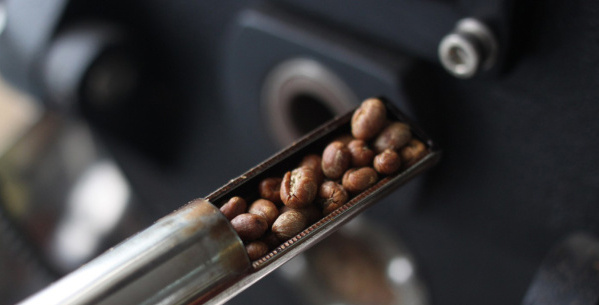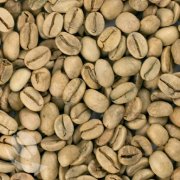Baking Guide | relationship between baking degree and sweetness

Professional barista communication, please pay attention to coffee workshop (Weixin Official Accounts cafe_style)
Roasting and sweetness
"The deeper the baking, the stronger the sweetness" means "the higher the sweetness intensity." This is a wrong idea.
* Green bean stage: sweetness has not yet begun to develop
* Heating dehydration stage: the first half of the temperature is insufficient to develop sweetness, the second half of the temperature just reaches the opening point of pyrolysis reaction 160~170 degrees Celsius, at this time began to have "saccharification", sweet began to develop.
* After dehydration, the temperature rises to the first explosion stage: the sweetness increases continuously, but the bean body is not evenly ripe, so the internal astringency and sour intensity> sweet intensity.
* From the beginning of the explosion to the end of the explosion: the sweetness continues to increase, the beans are close to complete ripeness at the end of the explosion, the internal astringency is reduced, the sourness is still strong, and the sweetness that can be detected by taste begins to emerge.
* End of the first explosion to the beginning of the second explosion: In addition to the "transsaccharification" continuing, the "caramelization" effect also quietly begins to sneak away. "Trans-saccharification" is an important step to increase the intensity of sweetness, while "caramelization" will reduce the intensity of sweetness and bring out some slightly charred aroma to increase the sense of hierarchy.
* Second explosion to the second explosion intensive stage: "turn saccharification" into the end,"caramelization" exuberant period, so the sweet intensity will not increase, but will become weaker and weaker, coking effect with time and increase the bitterness of carbonization and smoke, in addition to some irritating "second explosion spicy smell".
* Two-explosion intensive to the end of the second explosion stage: the sugar produced by "conversion saccharification" is fully utilized by the "caramelization" effect and converted into caramel with lower sweetness. At this time, due to the absence of sour factors, the cooked two-explosion end beans usually make people feel "bitter and sweet". If the two-explosion end beans are successfully baked and brewed, the bitter taste should be suppressed to a very low level. It tastes a bit like a high-purity dark chocolate "syrup". The sweet taste is very durable, but the intensity is not high.
Where does smoke come from?
Where does the smoke come from? This should start with how raw beans become mature beans ~
In order to transform raw beans into cooked beans that can be brewed, they must be roasted at high temperatures to produce "pyrolysis"
Pyrolysis, like the energy used to run machinery in factories, converts many of the "raw materials" in raw beans into "products"
Energy is heat from the outside, and heat is added.
Just like when we cook at home, the vegetables will be fried without careful control of the fire.
Most of the fried vegetables are carbohydrates, so the water is quickly dried by high heat in the process of being fried
Therefore, the original color of vegetables cannot be maintained, and they turn into carbon black.
Carbon black is close to charcoal, but not the end of its life.
Carbon will continue to burn until it turns to ash.
It still releases a lot of smoke when it burns.
Coffee beans are also carbohydrates in nature, so it works in principle.
But coffee beans and one more thing to pay attention to, is attached to the appearance of silver skin
Silver skin does not have a certain thickness and moisture like coffee beans, so its moisture is easily dried by high heat.
In addition, at a certain stage, the silver skin will peel off the coffee bean body, and at this time it is in the high temperature stage of continuing heating.
(Roasted coffee beans will exceed 200 degrees Celsius)
In a dry and hot environment, the surface of coffee beans will smoke, let alone thin silver skin ~
So how does smoke stay in coffee beans? How can we reduce the smoke?
The answer is in smoke.
The smoke is discharged smoothly, and of course the smoke will not attach too much to the coffee beans ~
Important Notice :
前街咖啡 FrontStreet Coffee has moved to new addredd:
FrontStreet Coffee Address: 315,Donghua East Road,GuangZhou
Tel:020 38364473
- Prev

Things to pay attention to when drinking instant coffee
Professional baristas please pay attention to the coffee workshop (Wechat official account cafe_style) drinking instant coffee should pay attention to: three-in-one instant coffee is mainly composed of sugar, fat and coffee, the nutrition is not as good as the coffee brewed with freshly roasted beans, but the fat and sugar are higher, the quality protein and caffeine are lower, the essence of coffee may be lost in the production process, often
- Next

How to select high quality raw coffee beans
Professional barista communication Please pay attention to the coffee workshop (Wechat official account cafe_style) to brew a cup of good coffee, you should start from selecting coffee raw beans of the same quality. in order not to let a small amount of impurities (whether fine metal or defective beans) affect the aroma of the coffee, it is necessary to go through complicated screening procedures to select the coffee with the same quality and high quality.
Related
- Beginners will see the "Coffee pull flower" guide!
- What is the difference between ice blog purified milk and ordinary milk coffee?
- Why is the Philippines the largest producer of crops in Liberia?
- For coffee extraction, should the fine powder be retained?
- How does extracted espresso fill pressed powder? How much strength does it take to press the powder?
- How to make jasmine cold extract coffee? Is the jasmine + latte good?
- Will this little toy really make the coffee taste better? How does Lily Drip affect coffee extraction?
- Will the action of slapping the filter cup also affect coffee extraction?
- What's the difference between powder-to-water ratio and powder-to-liquid ratio?
- What is the Ethiopian local species? What does it have to do with Heirloom native species?

